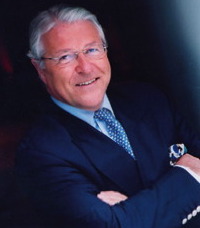
Sales of French cosmetic manufacturers continue to rise, driven by a domestic market that has returned to growth in 2010, in particular because ofselective distribution (2.8 billion euros in 2010, i.e. an increase of 1.9 % over 2009 according to NPD) and mass distribution (5 billion euros in 2010, i.e. an increase of 1.5% over 2009 according to Nielsen) and, despite a slight drop in sales from the pharmacies and drugstores circuit (1.54 billion euros, i.e. a drop of -0.87% compared to 2009 according to Nielsen).
But it is mostly thanks to their performance on foreign markets that cosmetic French manufacturers have continued to post remarkable growths in sales, said Gérard Delcour, Chairman of the Board of Directors of the FEBEA, (the French trade association representing manufacturers operating on the Beauty market), at a breakfast organized by the BeautyFULL Club last November 4th, themed on the main growth drivers for the beauty industry.
Indeed, figures provided by the French customs reported a 9.2% increase in French exports of perfumes and cosmetics in 2010 compared to the previous year. Overall French exports of perfumes and cosmetics reached 9.538 billion euros (ex-works before tax prices) in 2010. In this sector, the French trade balance surplus remains high (7.571 billion euros, i.e. an increase of 9.4% over the 2009 surplus.
While most of French exports go to countries of the European Union (53%), the markets where the growth is strongest are Latin America (which is currently only 4% of exports but up 24% in 2010), European countries outside the Union, which grew by 19% in 2010 (and account for 11% of exports, thanks to the weight of Russia) and the Far East, up 19% representing a share 12.8% of total French exports.
"If the market still clearly remains an European market, most of the growth come from emerging markets. It is estimated that 60% of the growth in years to come will be fuelled by the BRIC countries", commented Gérard Delcour.
However, behind this BRIC acronym - which means Brazil, Russia, India and China - lie some markets very different from one another. The Russian market is certainly the one who, with its structure, distribution and consumer preferences, is the closest to the French market and more generally the European one.
The Brazilian market however, is characterized by a severe lack of distribution networks, that leading brands (Natura, O Boticario, Avon) try to overcome by resorting to direct sales. "But things are changing, notes Delcour, especially with the arrival of Sephora, who last year took control of Sack’s an online shopping platform and one of the leading distributors of beauty products in Brazil."
India, however, remains primarily a market for toiletries and haircare products (bath and shower, shampoo, etc.) manufactured locally, and where imported high-quality products are only enjoyed by a small elite, particularly because of high custom duties and a very weak distribution network.
As for China, it is obviously a very dynamic market, but exporters of perfumes and cosmetic products are still facing great difficulties to access this market which has set up technical barriers effectively blocking the entry of new products.




























